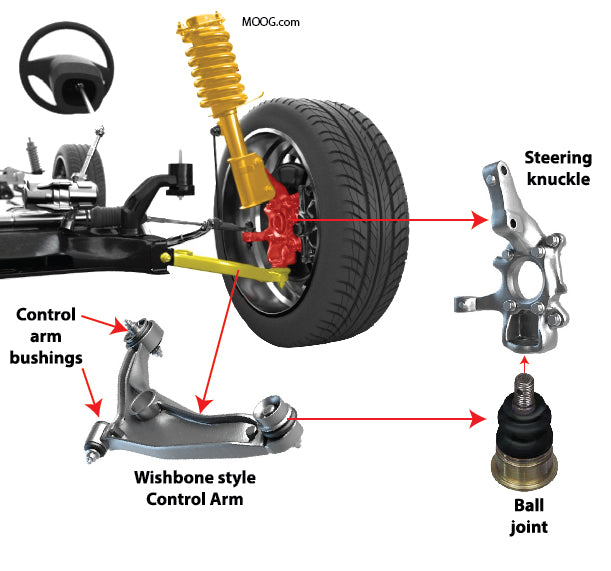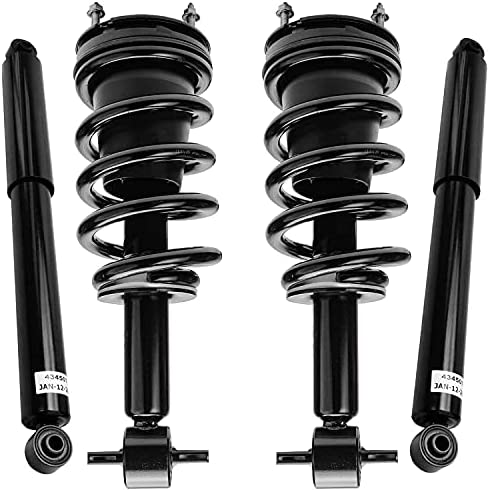Leaf springs are a type of suspension component found in many vehicles, including cars, trucks, and semi-trucks, trailer and buses. They are made up of several metal plates, or leaves, that are stacked on top of one another and attached to the frame of the vehicle at one end and to the axles at the other end. The leaves are flexible, and as the vehicle moves, they compress and expand, allowing the wheels to move up and down to absorb shock and maintain contact with the ground.
There are two main types of leaf springs: single-leaf and multi-leaf. Single-leaf springs are made up of a single, long leaf that is more flexible than a multi-leaf spring. They are typically used in smaller vehicles, such as compact cars, because they are lighter and cheaper to produce. Multi-leaf springs, on the other hand, are made up of several leaves that are held together by metal clips. They are stronger and more durable than single-leaf springs, and are often used in larger vehicles, such as trucks and buses, where more load-carrying capacity is required.
Leaf springs are an important component of the suspension system, as they help to absorb shock and maintain stability and control. They are also used to support the weight of the vehicle and its payload, and to transfer power from the drivetrain to the wheels. In some vehicles, leaf springs may be used in conjunction with other suspension components, such as coil springs or air springs, to provide a more comfortable ride and improve handling.
Leaf springs as a concept have been used for centuries. They were first called laminated or carriage springs, and they were used way back when people drove carriages instead of cars. They were used on pretty much every vehicle until the 1970s.
Today, you’ll see them on vehicles that haul heavy loads, like heavy-duty industrial vehicles along with many trucks, vans, and SUVs. These types heavy vehicles rely on leaf springs as opposed to other types of springs because they spread the load out more evenly over the vehicle’s chassis. In contrast, coil springs only transfer the load to one point on the vehicle.
If you have an older vehicle, you probably have leaf springs, even if that vehicle wasn’t intended to carry heavy loads. Coils and torsion springs have replaced the need for leaf springs on cars and other vehicles that don’t carry heavy loads that have been manufactured since the 1970s.
Leaf springs are an important part of a vehicle’s suspension system. Leaf springs (along with shocks and tires) are what keep you from feeling the shock every time you hit an uneven portion of road. You know how you sometimes feel a jarring sensation when you hit a huge pothole or piece of debris that’s in the road? Well, without leaf springs, you’d feel that all the time, since none of the shock would be absorbed.
For as much work as the leaf spring does to keep you safe, it’s a relatively small part. The leaf spring is an arc-shape small and narrow piece of steel that’s attached to your vehicle’s rear (and/or front) axle. It provides support for the weight of the vehicle and whenever additional weight is added.
Types of leaf springs
Monoleaf springs

Also called single-springs, monoleaf springs only have one plate of spring steal. These springs generally are thick in the middle and taper out at the ends. Monoleaf springs don’t offer a lot handling flexibility, and they create limitation of use if your vehicle hauls heavy loads. They are designed for a specific vehicle with a specific purpose.
If your monoleaf spring breaks, it shifts the axle, which can damage your vehicle and put you in danger. In short, monoleaf springs are usually not recommended for heavy hauling except when utilized in conjunction with a secondary support (air bags, bump stops, etc.)
Multileaf springs

Multileaf springs are more favorable than monoleaf springs for vehicles hauling heavy loads. They are made up of several leaves stacked together, instead of just one leaf. This makes them a stronger and more flexible option for hauling. It also means that when one breaks, they don’t all necessarily break, making it safer for you to drive. Multileaf springs can easily be modified and enhanced to increase the load capacity and/or ride height.
How do leaf springs work?
The whole point of leaf springs is to support weight, enhance handling performance, position the axle and absorb road shock. Improvement to your vehicle’s suspension can be made through design changes or adding/removing leaves. The ends (eyes) of your multileaf springs are attached to the vehicle’s chassis (frame), and then the differential housing is attached to the leaves’ center. Once attached, the leaves compress to absorb motion anytime the axle moves, regardless of the road conditions. This then transfers the energy to the chassis (frame). The result is a smoother ride for your vehicle, even on uneven surfaces or poor road conditions.
When do I need to replace leaf springs?
Like every part of your vehicle, your leaf springs will need to be replaced eventually. How long your leaf springs will last depends on how you use your vehicle. If you only haul heavy loads only occasionally your leaf springs could last hundreds of thousands of miles. If you regularly haul heavy loads and drive long stretches at a time, they’ll need to be replaced sooner than that. Some vehicles have leaf springs that were engineered incorrectly during manufacturing and require replacement or changes immediately.
If your vehicle has leaf springs and you notice that it isn’t riding as smoothly as it used to, or if you notice it swaying more than normal, you might need to replace your leaf springs. You might also notice uneven ride height front to back or side to side. At Spring Works we can perform a complimentary inspection to help you determine if your leaf springs are in good shape.
Get your leaf springs inspected as soon as you suspect they have gone bad to avoid further damaging your suspension system and paying for more expensive repairs. You can replace leaf springs on your own, or you can have the trusted professionals at Spring Works handle it for you.
Does my vehicle need leaf springs?
If your vehicle already has leaf springs and tows heavy loads, your suspension might benefit from the addition of leaf springs. Spring Work can install an add leaf to increase capacity and improve handling. This is especially true if you’ve noticed that your vehicle or lower or is swaying and bouncing more than you think it should. Adding leaf springs to your vehicles suspension can stabilize it, making it easier and safer for you to haul and tow heavy, bulky items.
Learn more about our leaf spring services. If you need to add new leaf springs, or if your existing leaf springs need to be replaced, you can schedule an appointment today.



